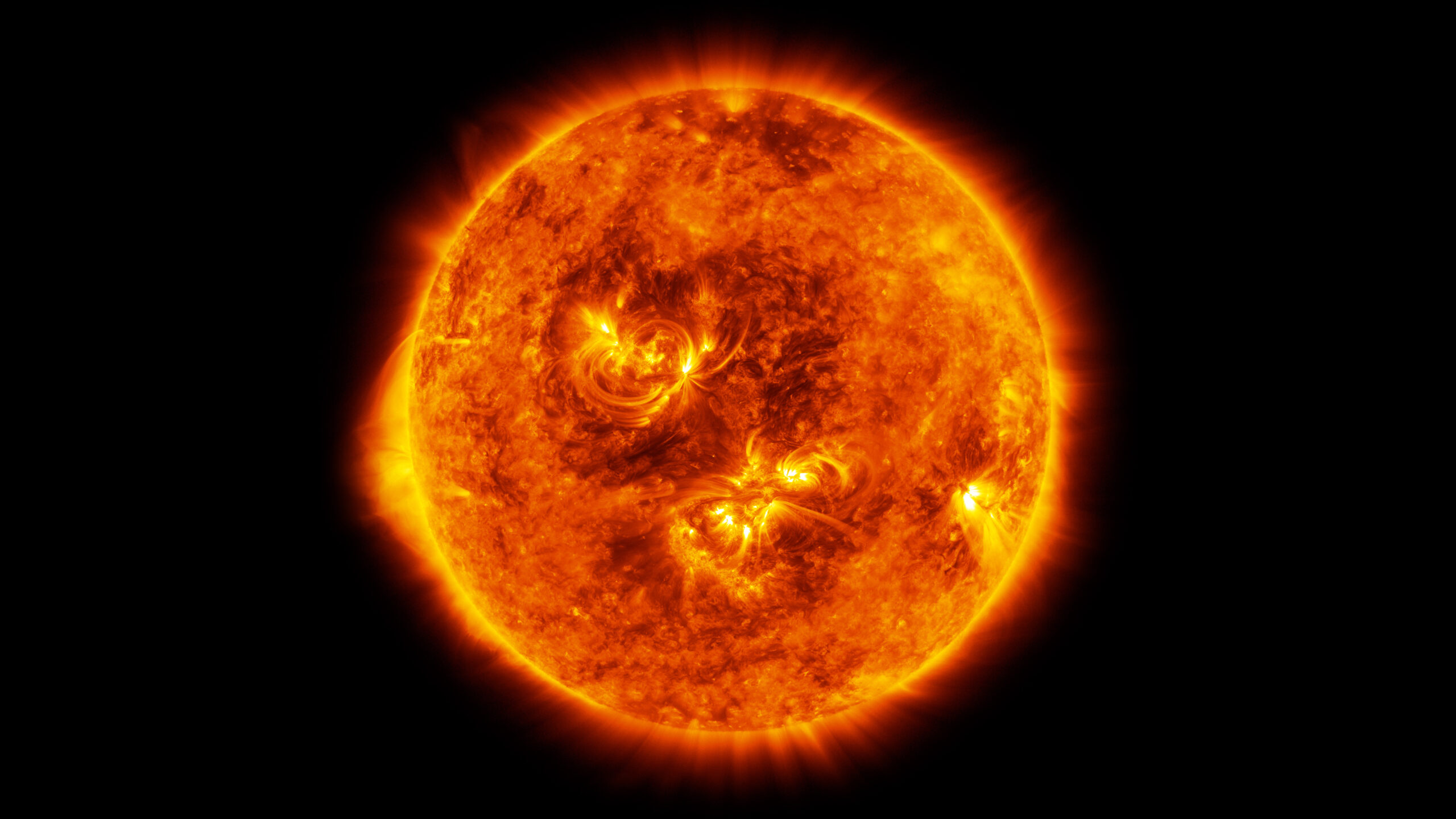The Sun: Its Composition, Temperature, and Origins Explained
The Sun is the coronary heart of our sun system. It offers the strength essential for life on Earth and influences the climate and climate styles. Understanding the Sun’s composition, temperature, and origins is vital for scientists to apprehend now not most effective the man or woman of our private film star however moreover how stars, in substantial, shape and evolve within the route of the universe. This article delves into the charming technological understanding in the back of the Sun, exploring its shape, the intense temperatures inner it, and how it came into existence billions of years within the past.
The Composition of the Sun
The Sun is a large ball of warm, ionized gases. It is on the entire composed of hydrogen, which makes up approximately seventy five% of its mass, observed with the aid of helium, which accounts for approximately 24%. The very last 1% consists of heavier factors which include oxygen, carbon, neon, and iron. These elements are positioned within the Sun’s outer layers and are essential for numerous techniques that arise in the huge name.
At the middle of the Sun, nuclear fusion occurs. This is the approach thru which hydrogen atoms are fused collectively to form helium, releasing large quantities of power inside the shape of moderate and heat. This power travels outward from the center, ultimately engaging in the floor and radiating into vicinity. The composition of the Sun, with its excessive share of hydrogen, is a vital component that impacts its fusion reactions and its potential to preserve the sort of massive output of electricity for billions of years.
The Sun’s composition isn’t always uniform all through its layers. As we skip from the center to the outer layers, the density of factors decreases. The center, wherein nuclear fusion takes place, is dense and warmth, while the outer layers, referred to as the corona and the photosphere, are cooler and much less dense.
The Sun’s Temperature
The temperature of the Sun varies across its awesome layers. The Sun’s middle is thru some distance the most up to date part of the celeb, with temperatures attaining up to 15 million degrees Celsius (27 million stages Fahrenheit). This immoderate warmth is critical to hold the nuclear fusion reactions that strength the Sun. In the middle, hydrogen atoms are beneath big pressure, inflicting them to fuse into helium and release electricity.
As energy actions outward from the middle, it passes through the radiative place, wherein it could take loads of years to tour from one stop to the alternative. In this region, electricity is transferred via radiation rather than convection. As the electricity moves thru the radiative vicinity, the temperature little by little decreases. At the boundary of the radiative zone, the temperature drops to round 2 million stages Celsius (three.6 million ranges Fahrenheit).
The outermost layer of the Sun, the corona, is hotter than the layers underneath it. While the corona’s temperature reaches spherical 1 to two million ranges Celsius, it’s miles in spite of the fact that a subject of ongoing studies as to why the corona is so heat compared to the Sun’s floor. One speculation indicates that magnetic fields and waves within the Sun’s outer layers may additionally additionally additionally contribute to heating the corona to those extreme temperatures.
The photosphere, it is the seen floor of the Sun, has a far cooler temperature than the middle or corona, sitting at round five,500 degrees Celsius (nine,932 stages Fahrenheit). This is the layer from which mild and heat break out and tour into vicinity, imparting the warmth that sustains existence on Earth.
The Sun’s temperature has profound implications for the manner it influences our sun tool. The extreme warmth and moderate from the Sun affect the entirety in the sun device, from the planets and their atmospheres to comets and asteroids. The Sun’s power is also answerable for using climate patterns on Earth and shaping the dynamics of area climate, at the side of sun flares and coronal mass ejections.
The Origins of the Sun

The origins of the Sun may be traced once more to round four.6 billion years ago, at the same time as a massive cloud of fuel and dust within the Milky Way galaxy started out to crumble below its private gravity. This event possibly brought about the formation of the Sun and the rest of the solar tool. The Sun’s formation is a part of a device known as stellar nebula concept.
As the cloud collapsed, it started out to spin and flatten, forming a rotating disk of gasoline and dust. Most of the cloth on this disk became pulled closer to the center, wherein it started to condense and heat up. Over time, the strain and temperature in the center of this cloud reached the aspect wherein nuclear fusion must occur. This marked the begin of the Sun.
The early Sun modified proper right into a protostar, a younger well-known individual nonetheless inside the manner of forming. The fusion reactions that power the Sun nowadays took loads of hundreds of years to start. Once nuclear fusion commenced out in the middle of the protostar, the Sun entered the primary series section of its life cycle. This section is characterized through the robust fusion of hydrogen into helium, which continues to nowadays.
The formation of the Sun is part of a much larger technique of huge name formation in the universe. Stars are born from molecular clouds, which might be massive areas of place entire of fuel and dust. Over time, these clouds can fall apart underneath their very own gravity, essential to the formation of new stars. The procedure of stellar formation, together with the start of the Sun, is a key detail of the lifestyles cycle of depend inside the universe.
The Sun’s Energy Production
The energy produced via the Sun is typically a give up result of nuclear fusion in its center. This manner begins offevolved at the identical time as hydrogen atoms are subjected to massive pressure and temperature, inflicting them to collide and fuse into helium. This fusion machine releases strength within the shape of mild and warmth. The energy produced inside the Sun’s center travels outward through the radiative place, wherein it is absorbed and re-emitted via debris. This approach can take masses of years for the power to collect the Sun’s outer layers.
Once the strength reaches the outer layers of the Sun, it radiates into vicinity within the shape of electromagnetic radiation, which incorporates visible moderate, ultraviolet rays, and X-rays. This strength is what powers the Sun and affords the essential warmth and mild to maintain existence on Earth. Without the Sun’s steady energy output, our planet might be a cold, dead place.
The Sun’s power production isn’t regular. It undergoes cycles of pastime, with the maximum well-known being the 11-yr sun cycle. During durations of immoderate solar interest, the Sun produces more sunspots, solar flares, and coronal mass ejections. These occasions might also have vast influences on vicinity weather and can have an impact on conversation structures, satellite tv for laptop tv for pc operations, or even strength grids on Earth.
The Sun’s Life Cycle
The Sun, like each stars, has a finite lifestyles span. It is currently approximately midway thru its lifestyles cycle, having spent spherical 4.6 billion years in its vital series segment. The Sun is anticipated to remain in this solid section for every extraordinary five billion years in advance than it starts to run out of hydrogen in its middle. When this takes area, the Sun will begin to evolve right into a pink massive.
As the Sun exhausts its hydrogen, it’s going to start to fuse helium into heavier factors. This way will purpose the Sun to enlarge, probable engulfing the inner planets, which includes Mercury, Venus, or perhaps Earth. As the Sun expands, it’ll shed its outer layers, forming a planetary nebula. The center of the Sun will stay, and over the years it’s going to cool and decrease proper into a white dwarf.
Eventually, the white dwarf will preserve to sit down again and fade away, marking the give up of the Sun’s existence. The demise of the Sun might also have a profound impact at the sun tool. The very last planets and moons can be left to waft in location, no longer supported thru the Sun’s mild and power. However, this device is billions of years inside the future, so the Sun although has hundreds of time earlier than it reaches the give up of its life.
The Sun’s Influence on the Solar System

The Sun exerts a effective gravitational pressure on all the gadgets within the solar machine. This pressure continues the planets, moons, asteroids, and comets in orbit across the Sun. The Sun’s gravity moreover plays a critical function in the formation of the solar device. When the Sun first formed, its gravity helped pull together the remaining material within the protoplanetary disk, critical to the formation of planets and other devices.
The Sun’s power has a profound effect on Earth. Without the Sun, our planet may be frozen and useless. The Sun gives the warmth essential for the water cycle, which in flip drives weather patterns and enables plant and animal existence. Solar power is likewise the foundation of photosynthesis, the method through which plants convert daytime into strength. This method is important for the increase of flora, which provide oxygen and meals for residing organisms.
The Sun moreover influences region weather, which could have big results on Earth’s technological infrastructure. Solar flares and coronal mass ejections can interfere with communication systems, GPS, or even electricity grids. The Sun’s magnetic area and solar wind additionally have interaction with Earth’s magnetosphere, growing phenomena which encompass auroras and affecting satellite tv for pc television for computer operations.
Conclusion
The Sun is a dynamic and effective celeb that plays an crucial characteristic inside the functioning of our sun gadget. Its composition, temperature, and origins are key to expertise the strategies that govern its behavior and its impact on Earth. From its nuclear fusion-powered energy production to its affect on area weather, the Sun is number one to our know-how of the universe and the situations essential for life.
As we maintain to check the Sun, we benefit extra insights into the lifestyles cycle of stars, the individual of electricity manufacturing, and the difficult strategies that form the universe. The Sun isn’t truely the deliver of mild and warmth for Earth; it’s miles a window into the broader workings of the cosmos. The extra we find out approximately the Sun, the more we apprehend our place inside the universe and the forces which have shaped our planet and our sun machine over billions of years.



1 thought on “The Sun: Its Composition, Temperature, and Origins Explained”